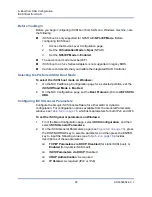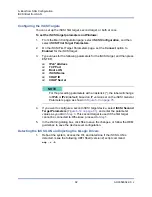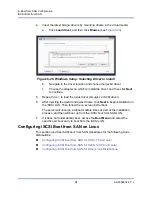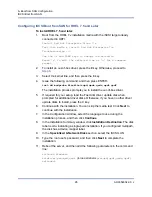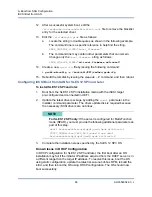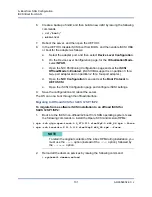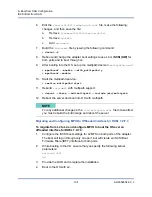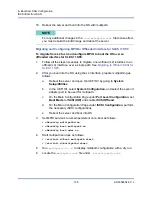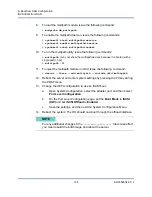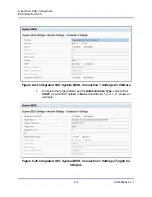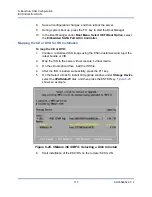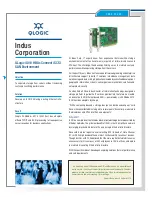
6–Boot from SAN Configuration
iSCSI Boot from SAN
101
AH0054602-00 J
6.
Create a backup of initrd, and then build a new initrd by issuing the following
commands.
#
cd /boot/
#
mkinitrd
7.
Reboot the server, and then open the UEFI HII.
8.
In the UEFI HII, disable iSCSI boot from BIOS, and then enable iSCSI HBA
or boot for the adapter as follows:
a.
Select the adapter port, and then select
Device Level Configuration
.
b.
On the Device Level Configuration page, for the
Virtualization Mode
,
select
NPAR
.
c.
Open the NIC Partitioning Configuration page and set the
iSCSI
Offload Mode
to
Enabled
. (iSCSI HBA support is on partition 3 for a
two--port adapter and on partition 2 for a four-port adapter.)
d.
Open the
NIC Configuration
menu and set the
Boot Protocol
to
UEFI iSCSI
.
e.
Open the iSCSI Configuration page and configure iSCSI settings.
9.
Save the configuration and reboot the server.
The OS can now boot through the offload interface.
Migrating to Offload iSCSI for SLES 12 SP1/SP2
To migrate from a software iSCSI installation to an offload iSCSI for
SLES 12 SP1/SP2:
1.
Boot into the iSCSI non-offload/L2 boot from SAN operating system. Issue
the following commands to install the Open-iSCSI and iscsiuio RPMs:
#
rpm -ivh qlgc-open-iscsi-2.0_873.111.sles12p2-3.x86_64.rpm --force
#
rpm -ivh iscsiuio-2.11.5.3-2.sles12sp2.x86_64.rpm --force
2.
Reload all the daemon services by issuing the following command:
#
systemctl daemon-reload
NOTE
To retain the original contents of the inbox RPM during installation, you
must use the
-ivh
option (instead of the
-Uvh
option), followed by
the
--force
option.




